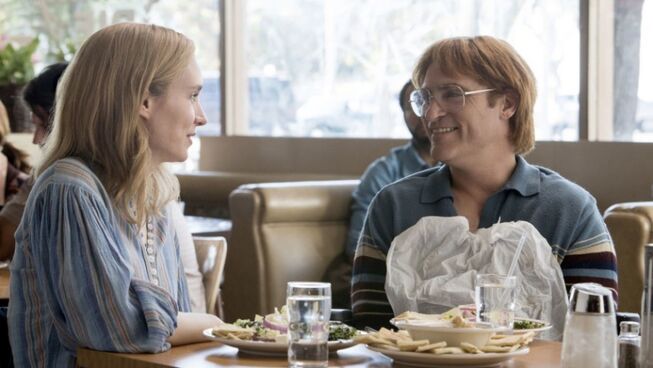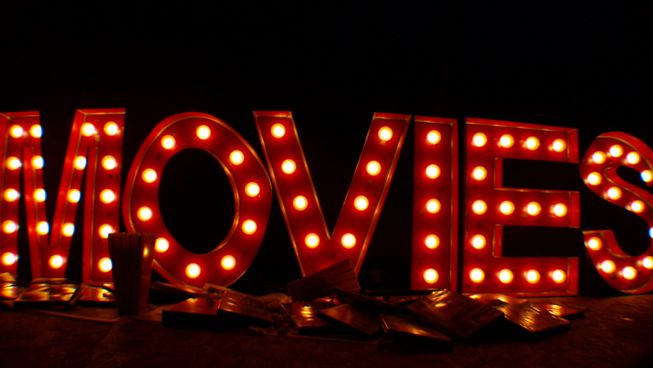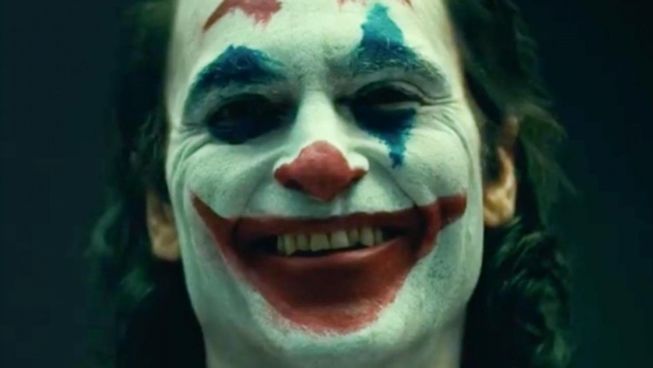Don't Worry, He Won't Get Far on Foot

2 out of 5 stars
John Callahan (Joaquin Phoenix) may not be familiar to many outside the community of artists and fans of the controversial cartoonist. He was an alcoholic, a quadriplegic and a cartoonist who managed to garner a cult following throughout his career. A man who could only be described as caustic and difficult, except to those who could learn to adapt to his erratic nature. Callahan was known for his humorous and politically-incorrect depictions of the struggle of those who live their lives in wheelchairs or managed to live with amputations. The social commentator began his career in the Williamette Week in Portland, Oregan then went on to submit his drawings in Penthouse, Playboy and even had two animated series, Pelswick and Quads. He lived a colourful life in the Pacific Northwest and died in 2010 from surgical complications.
The rights for his autobiography, Don't Worry, He Won't Get Far on Foot was initially acquired by Robin Williams who invited director Gus Van Sant (Good Will Hunting) take on this unique story as a film project. After Williams’ passing in 2014, the leading role was eventually handed to Joaquin Phoenix by Van Sant and with a supporting cast of Jack Black, Rooney Mara and Jonah Hill, the team worked to bring the life of this eccentric artist to the big screen.
John Callahan was only 21 years old when a friend fell asleep at the wheel of his car after and night of bar hopping. Dexter (Jack Black) walked away with few injuries, but John was left a quadriplegic. As he struggled with his physical condition, the real battle of his life was against his dependence on alcohol. With the help of Alcoholic Anonymous, his girlfriend Annu (Rooney Mara) and his AA sponsor, Donnie Green (Jonah Hill), he finds more productive outlets to release his anger and torched soul.
It was not until he finally tapped into his dark, but humorous nature that he finally found his relief from his internal and physical pain. John started arduously drawing crude cartoons that contained jokes that focussed on the life of those with physical challenges or groups that were the focus of his disdain like religion, political groups and government agencies. Despite protests and boycotts for his style, the Williamette Week continued to publish Callahan’s cartoons which led to national recognition and publications. Even with all of the success and recognition, Callahan’s torched soul continued to struggle with his addiction and relationships throughout his life.
Gus Van Zant brings a retrospective and raw analysis of this unappealing artist, not hiding his failings or flaws. Showing that despite his eventual minor celebrity status of the wheel-chair bound artist, the only thing to be celebrated in his life was his long-suffering friends and supporters. Joaquin Phoenix proves to be the perfect choice to portray the sociopathic artist by committing fully to the physical and psychological struggles of this character. The brilliance of his performance could be seen in his ability to embody the role while leaving the audience with little sympathy for his self-induced plight. This performance was complemented beautifully by fantastic performances from Jonah Hill and Jack Black who stole each supporting scene they had with Pheonix, regardless of the minimal screen time they were given.
Great performances cannot mask an unappealing story: Despite the strength of the performances and Van Zant’s ability to tell Callahan’s story, this biographical sketch lacks any appeal. The fault can be found in the real-life character of the artist. The story seems to articulate that audiences might desire for this disabled man to succeed or at a minimum provide a catalyst for sympathy, but instead he proves that just because someone may be disadvantaged on certain levels that do not make them likeable.
Living a life in a wheelchair could not mask his selfish, self-destructive and abrasive nature. The film could have been an expression of someone overcoming great odds and changing for the better, unfortunately, the whole thing falls flat in the end. The central character and supposed protagonist in this tale also proves to be the antagonist and in the end it is difficult to separate the two. The real answer to the answers John Callahan was searching for in life came down to addressing his ‘heart-status’ not his physical state.
Passages that describe the heart-state of man-kind? Jeremiah 17:9-10, Mark 7:21-23, Luke 6:45,
The solution to mankind’s ‘heart-state’: Psalm 51:10, Mark 12:30, Romans 10:10






